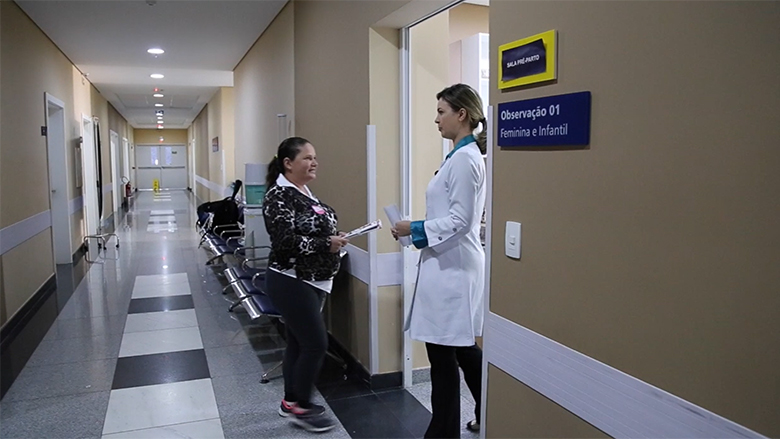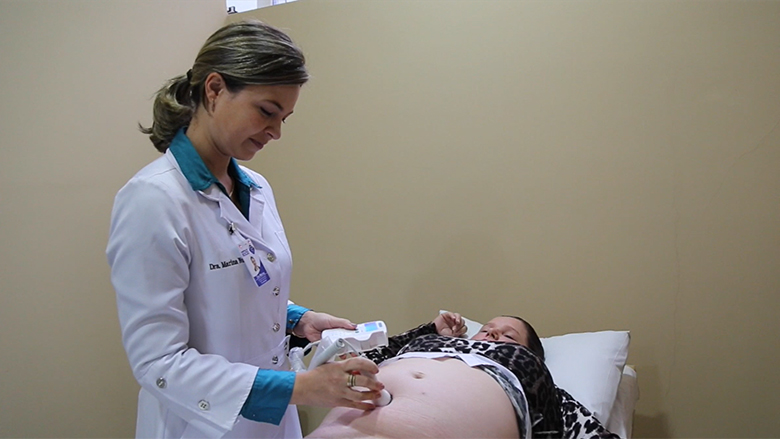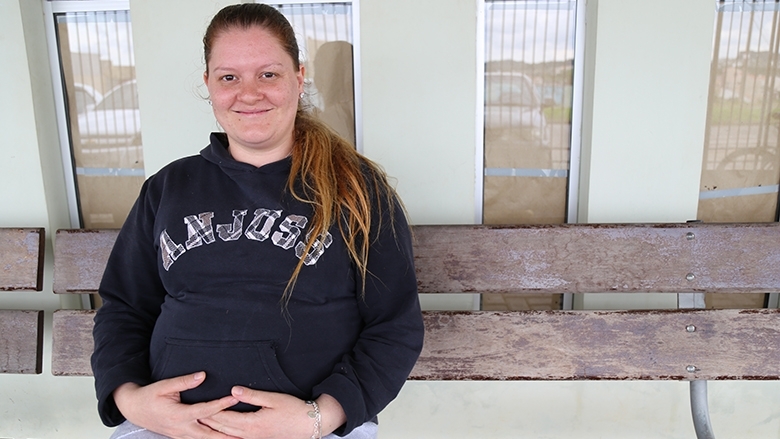Challenge
Despite relatively high incomes, residents of the state of Paraná faced many problems. Maternal health services were inadequate, and consequently mortality rates remained stubbornly high for both mothers (65.11 per 100,000 in 2010) and children (12.17 per 1000 in 2010). Emergency care service coverage was incomplete, resulting in high mortality rates from nonviolent causes (51.48 per 100,000 in 2011). In education, repetition and dropout rates were high, especially in the second cycle (lower secondary school) of primary education; in 2010, repetition reached 13.6 percent and the dropout rate was 4.4 percent. Paraná’s agricultural economy was threatened by widespread water quality and soil degradation, inadequate and excessive use of pesticides, and the loss of forest cover and biodiversity. The state also lacked a disaster risk monitoring and management system, resulting in frequent and costly property and personal damage and health risks following storms and flooding. Efforts to improve these situations were hampered by inefficient and ineffective public administration.
Approach
The Paraná SWAp for Multi-Sector Development Project had the following objectives: (i) increase the graduation rate in the final cycle of fundamental education (ninth grade, lower secondary); (ii) improve maternal and emergency health care services; (iii) promote business initiatives and improve natural resource management in rural areas; and (iv) help build capacity in public administration and environmental and disaster risk management. The project was an investment financing operation with a large results-based component designed to finance the state authorities’ priorities in health, education, disaster risk management, natural resources management, rural livelihoods, and tax management. The project comprised two components: the first co-financed selected government programs to support the government of Paraná’s integrated approach to promoting social and economic development; the second provided technical assistance to strengthen public sector management.
Results
Results were achieved in all five key areas of focus:
Health:
- To strengthen their ability to identify risk factors and provide appropriate care, including referrals for specialized medical attention for those at higher risk, nearly 60,000 medical professionals received technical training in neonatal and obstetric emergency care and health administration.
- Maternal mortality declined from 65.11 per 100,000 in 2010 to 43.30 per 100,000 in 2019.
- Infant mortality declined from 12.17 to 10.3 per 1,000 births between 2010 and 2019.
- The share of live births to pregnant women who had more than seven prenatal check-ups increased from 80 percent in 2012 to 100 percent in 2019.
- Since 2019, 100 percent of pregnant women found to be at high risk for complications are referred from primary care units to hospitals for closer follow-up and care. (The number in 2012 was 5.5 percent.)
- The mortality rate for deaths from external causes (excluding violence), decreased from 51.48 per 100,000 in 2015 to 46.34 in 2019, against a target of 48.97: more than 1,000 deaths were prevented over the project period.
- Hospitals receive additional risk-based funding as an incentive to provide prenatal and postpartum services.
Education:
- Graduation rates in the final cycle of primary school (ninth grade) increased from 78.8 percent in 2012 to 85.9 percent in 2019.
- Between 2011 and 2018, 466 state schools were rehabilitated or expanded.
- A student learning assessment system (Sistema de Avaliação da Educação Básica do Paraná, SAEP) was put in place; teacher training was strengthened to improve educational quality, and learning outcomes and needs were closely monitored. The assessment system is operational, and as of 2019, five assessments had been carried out.
- The number of teachers working in indigenous areas increased from 437 in 2014 to 807 in 2019.
Environmental and disaster risk management:
- The disaster risk management system was designed and equipped following best practices from around the world.
- A disaster monitoring unit, fully operational since 2015, provides real-time monitoring of disaster risks in the state. Fifteen rapid response teams respond to flash floods and other natural disasters and an automated system now alerts, locates, and communicates with citizens when disasters occur.
- State emergency services were extended to cover 90 percent of the state territory and to respond within the targeted one-hour period.
- The average time for processing complex requests regarding water use rights was reduced from 180 days in 2012 to 90 days in 2019; in some cases, temporary user licenses can be obtained immediately online.
Rural development:
- Soil and water management was strengthened: 728,000 hectares were supported by interventions under 321 Micro-catchment Action Plans.
- More than 3,000 people in rural areas gained access to improved water sources.
- Rural livelihoods were supported through support and training to cooperatives (5,200 families) and small farmers’ associations (over 75,000).
- Approximately 675 kilometers of rural roads received upgrades or maintenance by 2019.
Public sector management:
- Between 2016 and 2019, 22,000 civil servants (54 percent women and 46 percent men) received training in various aspects of public sector management for results, and a platform for sharing best practices was created.
- An internal control information system was designed and implemented between 2017 and 2018; with 100 percent of users trained, it is now operational in all 117 government entities.
- A new integrated tax administration system is now being deployed.
- Over 4,000 real estate assets have been mapped and valuated between March 2016 and December 2018.
- Two regional development plans have been prepared in consultation with local communities.
Bank Group Contribution
The World Bank, through the International Bank for Reconstruction and Development (IBRD), financed a loan of US$350 million to cover approximately half of the government’s total program costs (US$713 million); the remainder was financed by the state authorities. Of the US$350 million loan, US$315 million supported government programs and US$35 million was used to provide technical assistance.


Partners
To design and implement the project, the World Bank worked with the Secretaries of Planning, Education, Health, Rural Development, and the Environment and with other partners such as the Institute for Social and Economic Development (IPARDES), Institute for Water (IAT), Rural Development Institute (IDR/EMATER), various territorial and municipal councils, and numerous local NGOs. Other partner institutions financed related activities and projects in Paraná, including the Inter-American Development Bank (IADB), Development Bank of Latin America (CAF), and the Brazilian Development Bank (BNDES).
Beneficiaries
The state's population as a whole benefited from this project, but the main stakeholders included (i) employees at all government secretariats and agencies involved, since activities affected procedures, practices, and human resource policies; (ii) students in the final cycle of fundamental and secondary school and their parents; (iii) teachers, the staffs of teachers’ unions and school administrations, since the project supported changes in schools; (iv) health sector professionals; (v) users of the public health system and people lacking adequate access to health services, particularly women; (vi) approximately 21,000 rural families living in the Central Region of Paraná, which the project reached through producer's organizations, as well as approximately 32,000 rural families in other areas of the state with major soil and water management issues; and (vii) private sector organizations subject to state environmental licensing procedures.
Geisielen Ferreira, a cleaning assistant in Paraná, is one the more than 180,000 women who have benefited from the project’s investments in improved maternal care. “In the beginning, I was very scared because I wanted so badly to become pregnant and then this high-risk pregnancy came. In my head, I thought that I wasn’t going to be able to give birth,” Geiselen said. “There are people who think that if it’s a public service, the attention/care will be worse, but there was no difference. I am grateful.”
Moving Forward
A majority of the results achieved under the project are sustainable and fully supported under the state’s own budget and resources going forward. The areas supported by the project remain a high priority for the government. Some questions remain to be resolved regarding the financial sustainability of the teacher training program and corresponding staff salary increases. The state government has requested support from IBRD for a follow-up operation, which would support continuing some results areas, notably in natural resources management, health sector management, and core public sector management.
